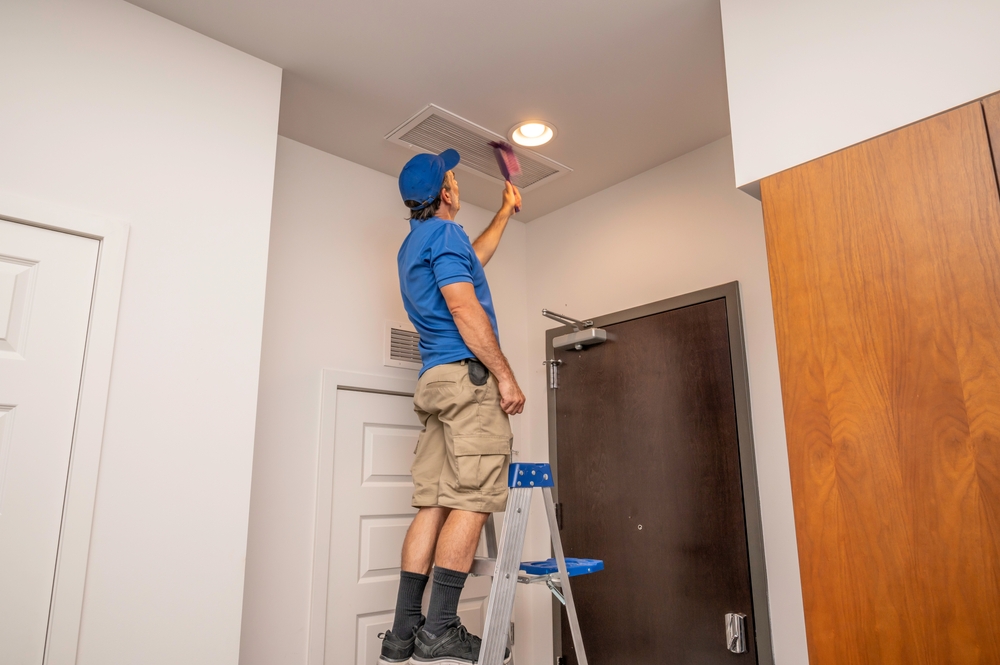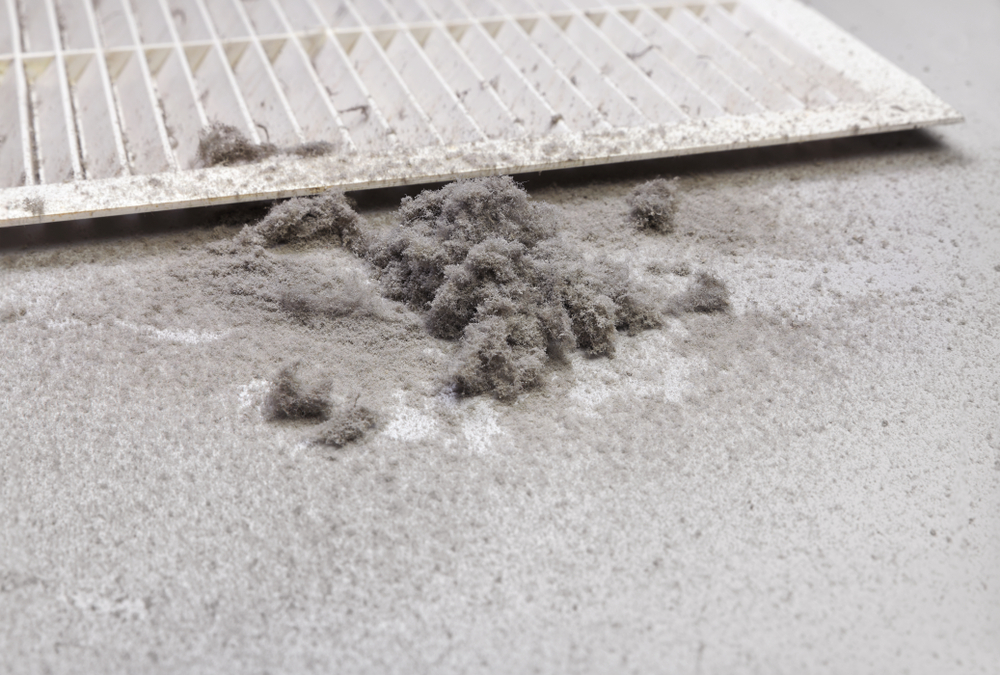Indoor air quality plays a pivotal role in the health and comfort of our homes. One often overlooked aspect of maintaining clean and healthy indoor air is the regular air duct cleaning. But how frequently should you clean your air ducts?

The answer isn’t a one-size-fits-all proposition. Several factors, including your location, usage patterns, and the presence of specific contaminants, influence the recommended frequency of duct cleaning.
Understanding the Basics: Why Air Duct Cleaning Matters
Before delving into the ideal cleaning frequency, it’s essential to grasp the significance of clean air ducts. Over time, dust, debris, allergens, and even mold can accumulate within the duct work of your HVAC (Heating, Ventilation, and Air Conditioning) system. This buildup not only diminishes the system’s efficiency but can also compromise indoor air quality.
Dirty ducts become a breeding ground for contaminants, circulating them throughout your living space every time you turn on the heating or cooling system. This can lead to respiratory issues, allergies, and other health concerns, particularly for individuals with pre-existing conditions.
Regular duct cleaning is a proactive measure to mitigate these risks, ensuring that the air circulating in your home remains clean and safe for you and your family. Now, let’s explore the factors that determine how often you should schedule this crucial maintenance task.
1. Location Matters: Urban vs. Rural Environments
The environment in which you live has a significant impact on the rate at which dust and contaminants accumulate in your ducts. Urban areas, characterized by higher levels of pollution and dust, may warrant more frequent duct cleaning compared to rural environments with cleaner outdoor air.
If you reside in a city with heavy traffic and industrial activities, consider scheduling duct cleaning every 2 to 3 years. On the other hand, those in less polluted areas might extend the cleaning interval to 3 to 5 years. Pay attention to local air quality reports and adjust your cleaning schedule accordingly.
2. Usage Patterns: How Often Do You Run Your HVAC System?
The frequency with which you use your heating and cooling system also influences the buildup of particles in your air ducts. Homes that rely heavily on HVAC systems throughout the year, either for heating or cooling, may accumulate debris more quickly than homes with more moderate usage patterns.
For households with year-round HVAC usage, it’s advisable to schedule duct cleaning every 2 to 3 years. However, if you use your system seasonally or sparingly, you might extend the cleaning interval to 3 to 5 years. Be mindful of how frequently you run your HVAC system and adjust your cleaning schedule accordingly.
3. Specific Contaminants: Mold, Pests, and Other Culprits
Certain contaminants can accelerate the need for more frequent duct cleaning. Mold, for instance, can thrive in damp conditions within the duct work. If you’ve experienced water damage or live in a humid climate, you should inspect your ducts regularly and clean them every 2 to 3 years, or as needed.
Pests can also contribute to the need for more frequent cleaning. Insects, rodents, and other unwanted guests may find their way into your ducts, leaving behind debris and droppings. If you’ve had pest issues, consider more frequent inspections and cleaning, typically every 2 to 3 years.
4. Allergies and Health Concerns: Tailoring Cleaning Frequency to Your Needs
If you or your family members suffer from allergies or respiratory conditions, it’s crucial to be proactive about maintaining clean air ducts. Allergens like dust mites, pollen, and pet dander can exacerbate symptoms and compromise indoor air quality.
For households with allergy sufferers or individuals with respiratory issues, a more frequent cleaning schedule is advisable. Consider cleaning your ducts every 1 to 2 years to minimize the presence of allergens and create a healthier indoor environment.
5. Recent Home Renovations: A Prompt for Duct Inspection
Home renovations, while enhancing the aesthetic appeal of your living space, can introduce additional contaminants into your air ducts. Construction dust, debris, and other particles may find their way into the HVAC system during remodeling projects.
If you’ve recently undertaken home renovations, it’s prudent to inspect and clean your air ducts promptly. A one-time post-renovation cleaning, within six months to a year after the project completion, can help eliminate any residual contaminants and maintain optimal indoor air quality.
Determining how often you should clean your air ducts involves assessing a combination of factors specific to your living situation. By considering your location, HVAC system usage patterns, the presence of specific contaminants, and the unique needs of your household, you can tailor a duct cleaning schedule that promotes clean air and a healthy living environment.
Regular maintenance of your air ducts not only enhances indoor air quality but also extends the lifespan and efficiency of your HVAC system. It’s an investment in the well-being of your family and the longevity of your home’s heating and cooling infrastructure.
As a general guideline, a proactive approach to duct cleaning is recommended. Rather than waiting for visible signs of contamination or deteriorating indoor air quality, establish a routine maintenance schedule based on the factors discussed. By doing so, you’ll breathe easier, knowing that you’ve taken essential steps to ensure the air you and your loved ones breathe is as clean and healthy as possible.





